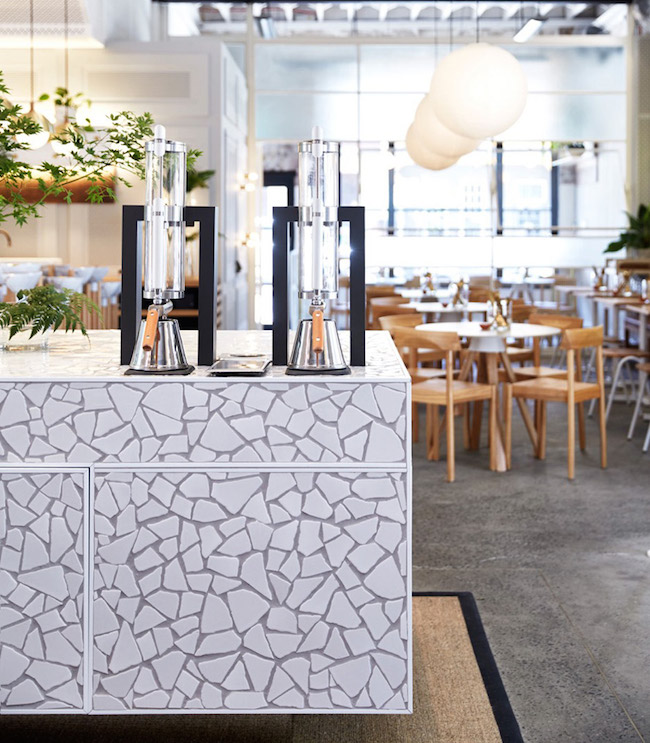SYDNEY, Australia — It wasn’t so long ago that we wrote about Tom Sachs’ unique spin on the Japanese tea ceremony at the Isamu Noguchi museum in Queens. Shortly after, we wrote about a fascinating exhibition that explores the artistic possibilities of repaired ceramics. This piece today gives us both: designer Matt Woods installed a tea display at The Rabbit Hole Organic Tea Bar in Australia.
Woods began by stripping the building down to its industrial roots— brick walls and exposed timber ceilings. To soften that image he whitewashed the walls and allowed natural light to flood the space. It’s a choice that allows contrast between the original style of the building and its new purpose.
The repurposing theme shows up in some of Woods’ ceramic additions to the space. For starters he built a countertop adorned with bright white ceramic shards.
Our main point of interest, though, is Woods’ display of Japanese tea bowls. Woods told Dezeen that he was influenced by Kintsugi, aka “golden repair,” the art of repairing broken pottery. It’s a great visual metaphor for the whole being greater than the sum of its parts. He says of the piece:
“The Japanese art of Kintsugi forms the foundation of the new design elements,” he said. “This is most apparent in the specialty tea display where, like spinning plates on top of a circus performers pole, custom designed Kintsugi bowls sit delicately above turned oak timbers.”
The wood poles add a lot to the piece. They’re parallels to the timber ceiling. They’re also slender. No real estate is wasted and so the bowls are balanced precisely on the tips of the poles. This all works together to imply poise and grace, themes that are certainly at home in a tea house.
Do you love or loathe these designs in contemporary ceramics? Let us know in the comments.




Add your valued opinion to this post.